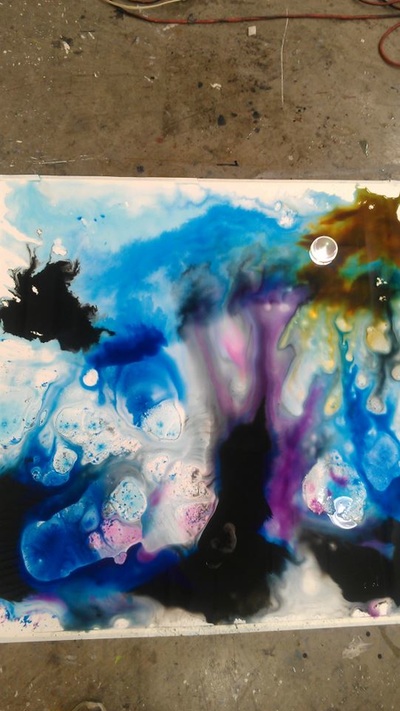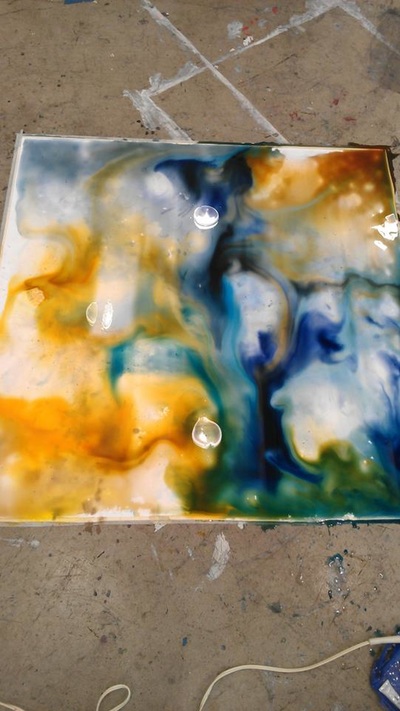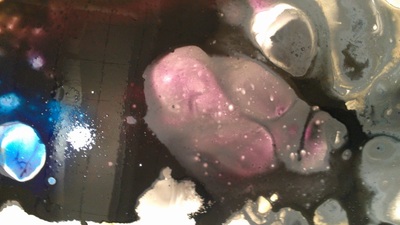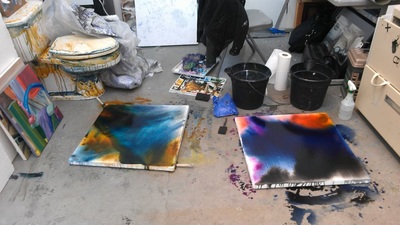What is Yupo? Yupo is a synthetic paper with a slick surface. It is smooth and minimally porous, and thus does not absorb liquid as well as traditional painting surfaces (but absorbs better than, say, glass). It is water-proof, tree-free, and can be used with a variety of art materials. Although I primarily use watercolors and inks to paint on it, it holds acrylics and oils just as well without the need for a primer while providing for an ultra-smooth surface. It is a highly sensitive surface that easily scratches, and does yellow over time, as do most papers, whether or not protected from harmful UV light.
Although most of my work maintains many organic and fluid elements in the making process, highly detailed work can be achieved with it. A variety of useful equipment can be used to paint upon its surface, the total of which is often impossible to say I've used on any given piece. I can easily say, however, that blow dryers, ink bottles, spray bottles, brushes, and dip-pens have been used in almost every one of my pieces.
If you have any questions regarding Yupo, painting processes on Yupo, or how best to frame your newly-acquired Yupo artwork, feel free to contact me. I have been using the surface for a decade and know most of the ins and outs of it. All originals come framed with framing/re-framing instructions.
Please enjoy this page of mid-process and in-studio photos! They never dry like this, so knowing how your materials will end up is important to the final outcome.
Although most of my work maintains many organic and fluid elements in the making process, highly detailed work can be achieved with it. A variety of useful equipment can be used to paint upon its surface, the total of which is often impossible to say I've used on any given piece. I can easily say, however, that blow dryers, ink bottles, spray bottles, brushes, and dip-pens have been used in almost every one of my pieces.
If you have any questions regarding Yupo, painting processes on Yupo, or how best to frame your newly-acquired Yupo artwork, feel free to contact me. I have been using the surface for a decade and know most of the ins and outs of it. All originals come framed with framing/re-framing instructions.
Please enjoy this page of mid-process and in-studio photos! They never dry like this, so knowing how your materials will end up is important to the final outcome.
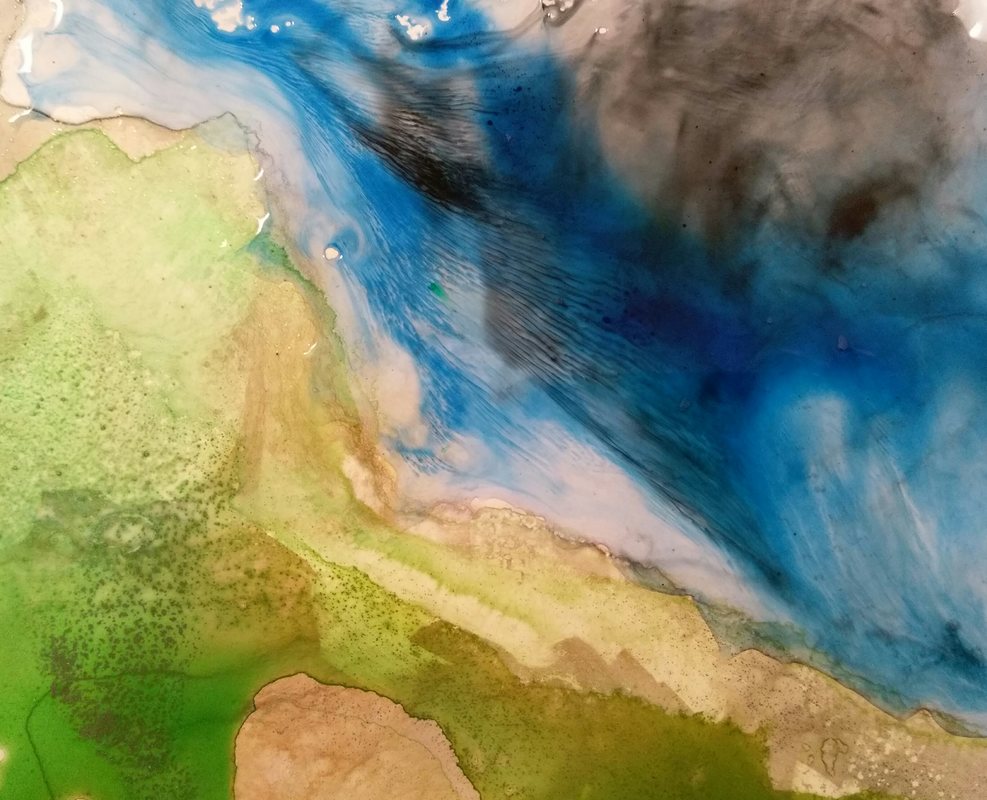
With this piece, I used a thick layer of water over dried watercolor and dropped ink into it. It has a beautiful effect as the paint settles. Watercolor is pigment-based whereas the acrylic inks are synthetic, so the pigment grits that get pulled up from the water settle back down before the acrylic inks do (as seen in the green). Although not visible in a 2D image, those flicks of light blue you can see in the blue area at the top are actually 3D streaks of acrylic hanging in the water as they move, flow, and settle.
